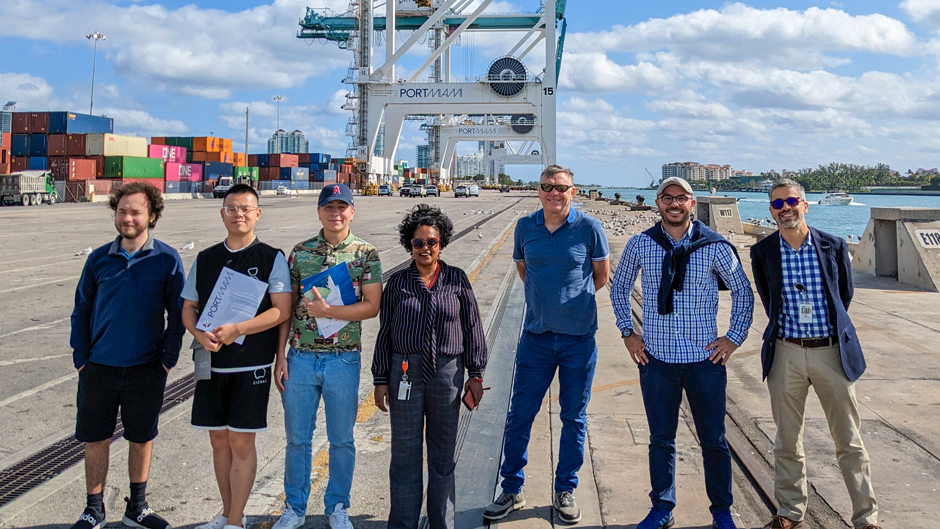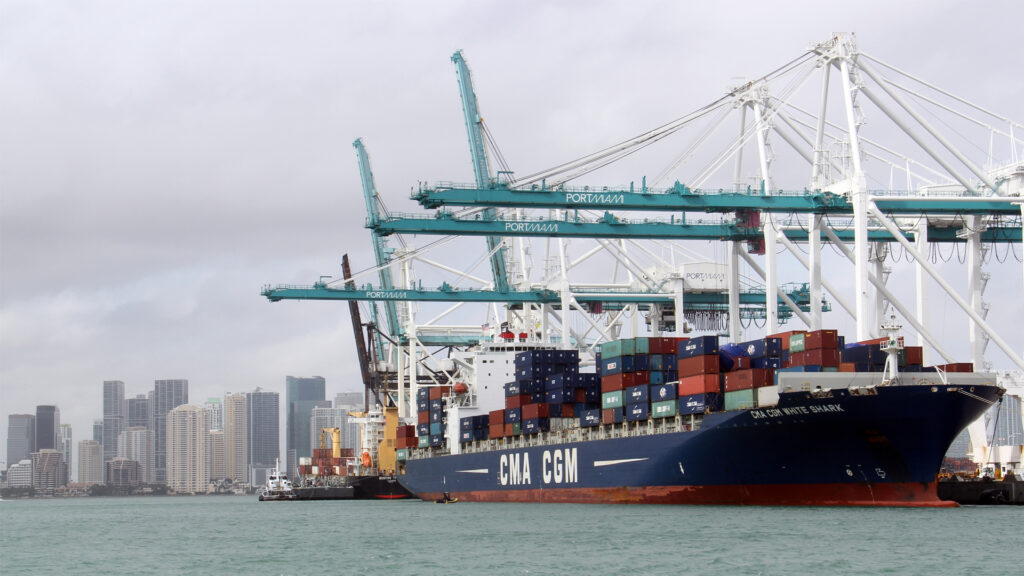By Janette Neuwahl Tannen, University of Miami News
You’re only as strong as your network.
That was the takeaway of a team of University of Miami researchers who spent a year investigating the resilience of the Port of Miami.
After an exhaustive look at the port and its neighbors, Richard Grant and Shouraseni Sen Roy, professors of geography and sustainable development in the College of Arts and Sciences, and Landolf Rhode-Barbarigos, associate professor of civil and architectural engineering in the College of Engineering, along with three students, were glad to discover that Miami’s main cruise and cargo thoroughfare is prepared for the climate challenges of the future. However, they cautioned that its success may be hindered by its neighboring ports, many of which are less resilient to the climate challenges that lay ahead, new research indicates.

“Miami has done a lot to really plan for the future, but the curious position of Miami is it’s highly linked to the Caribbean and Latin America and many of these are extremely vulnerable ports,” said Grant, the lead author on the study and a seasoned urban geographer.
In one of the first studies to investigate the maritime network that links Miami to the Caribbean and the greater United States, the research — which was funded by the University Laboratory for Integrative Knowledge, or U-LINK — uncovered that in recent years, the port has prepared itself for a warming climate. It has added shore power for cruise ships to help curb air pollution and installed electric cranes to efficiently offload cargo. It also now requires LEED certification on all new cruise terminals and is working to elevate some older buildings.
Located just east of the city’s downtown core on Dodge Island, the port spans just 520 acres of land. But it is a critical part of the South Florida — and U.S. — economy, employing more than 330,000 people and linking goods from Central and South America to the rest of the nation. For cruisegoers, it is also the nation’s busiest home port.
During the pandemic, when many of America’s 300 ports were stymied by supply chain interruptions, the team noted that the Port of Miami kept cargo moving efficiently, demonstrating its strength to world trading conglomerates. In addition, since Miami is a major hub for fruits and vegetables imported from South and Central America, the port is helping to facilitate the building of a new U.S. Department of Agriculture facility at Miami International Airport where these products could be stored, cleaned, and shipped via air. It is also hoping to attract more imports of medications in the future.
“Miami was able to stay functioning during the pandemic and get things off boats, so the logistics at the port are very efficient,” Grant added.
Yet, several ports that trade with Miami the most, like Veracruz along Mexico’s Gulf Coast, Honduras, the Dominican Republic and St. Thomas are less prepared for climate challenges, which scientists warn are imminent.
The team analyzed the network connections between the Port of Miami, or PortMiami, and its top 10 connections for cargo and cruise using a climate risk index created by a previously published study, combined with data on connectivity from the United Nations Conference on Trade and Development, and container port performance information from the World Bank.

“I thought Miami would be at a high risk for climate impacts, but places like St. Thomas, the Dominican Republic, and Nassau are at a much higher risk,” Sen Roy said.
The team also analyzed Miami’s connectivity, or shipping traffic, to other ports in the region, and found that it is most active with Caribbean ports in the Bahamas, Jamaica, Mexico, and the Dominican Republic, as well as its closest U.S neighbors in New Orleans, Louisiana, and Savannah, Georgia, which are both in pretty good shape. They created several interactive dashboards about the local maritime network using GIS mapping, some of which are included in the study, Sen Roy added.
“This is one of the first times a study has been done focused on one port and its neighboring ports in context,” Sen Roy said. “Most studies simply look at a port by itself.”
Toward the end of the study, the team recommended that the port and airport, which are intimately connected, also be further integrated into the Miami-Dade County master plan. This could also help imports and exports to be stored in more strategic ways for more efficient transport, Grant noted.
“In Miami, low-rise warehouses are scattered all over the place, but the trend in major cities is to have multistory warehouses,” Grant added. “That would help our situation, as well as if we also had direct routes for trains or trucks. In general, trade networks within Miami should be studied more holistically.”
Next, the team hopes to study other ports in the Caribbean, such as two particularly vulnerable ones in the Dominican Republic, to help make them more sustainable to climate change.
This piece was originally published at https://news.miami.edu/stories/2024/05/port-of-miami-is-strong-but-ports-in-its-network-show-climate-vulnerabilities.html.
Sign up for The Invading Sea newsletter by visiting here. If you are interested in submitting an opinion piece to The Invading Sea, email Editor Nathan Crabbe at ncrabbe@fau.edu.



